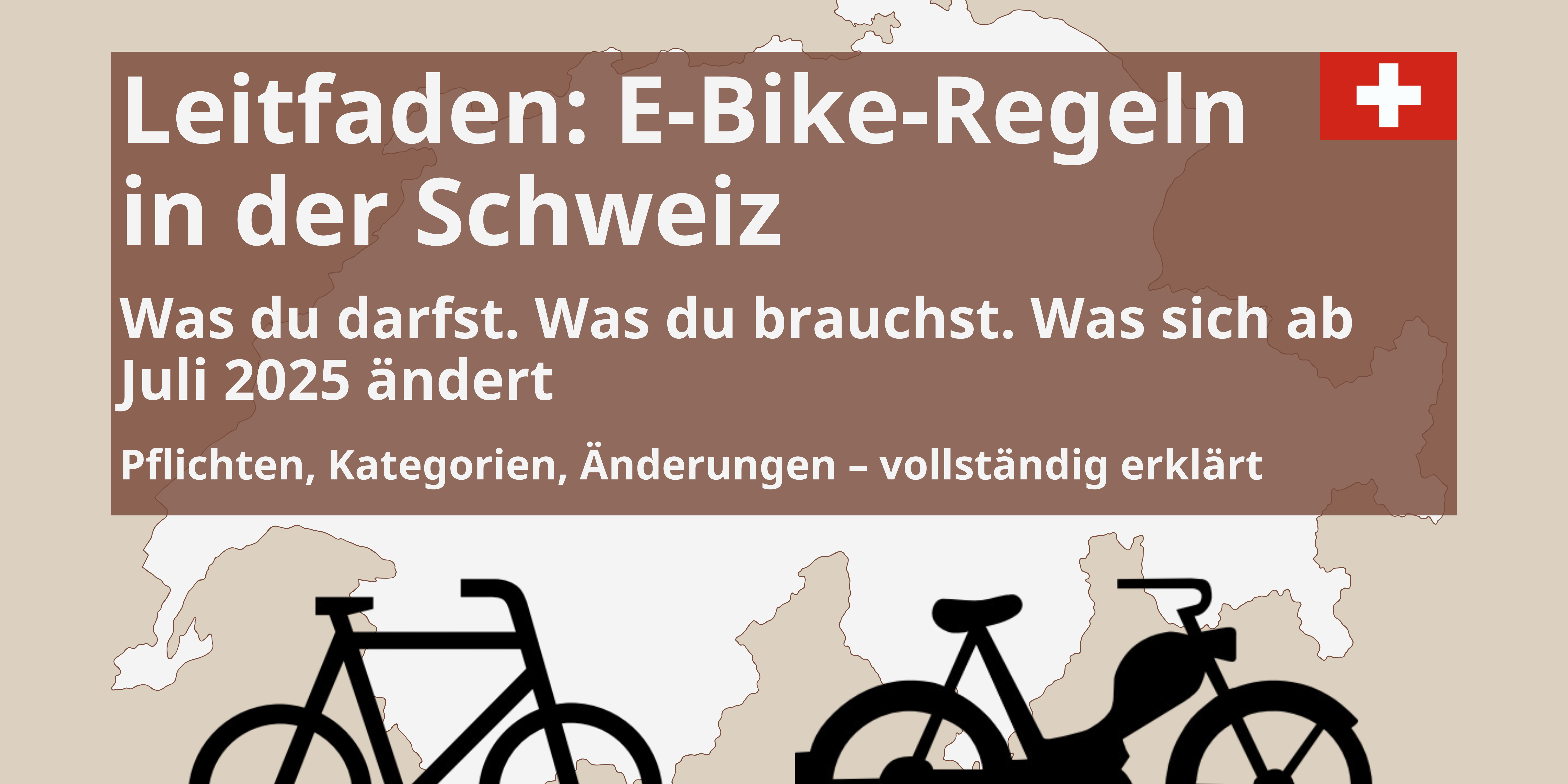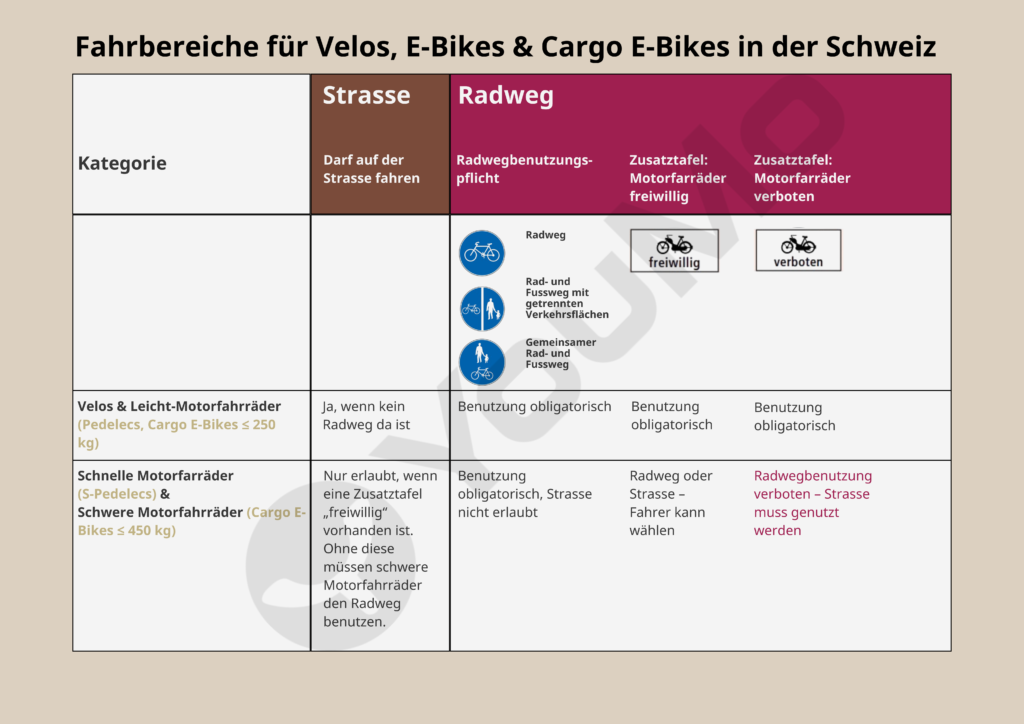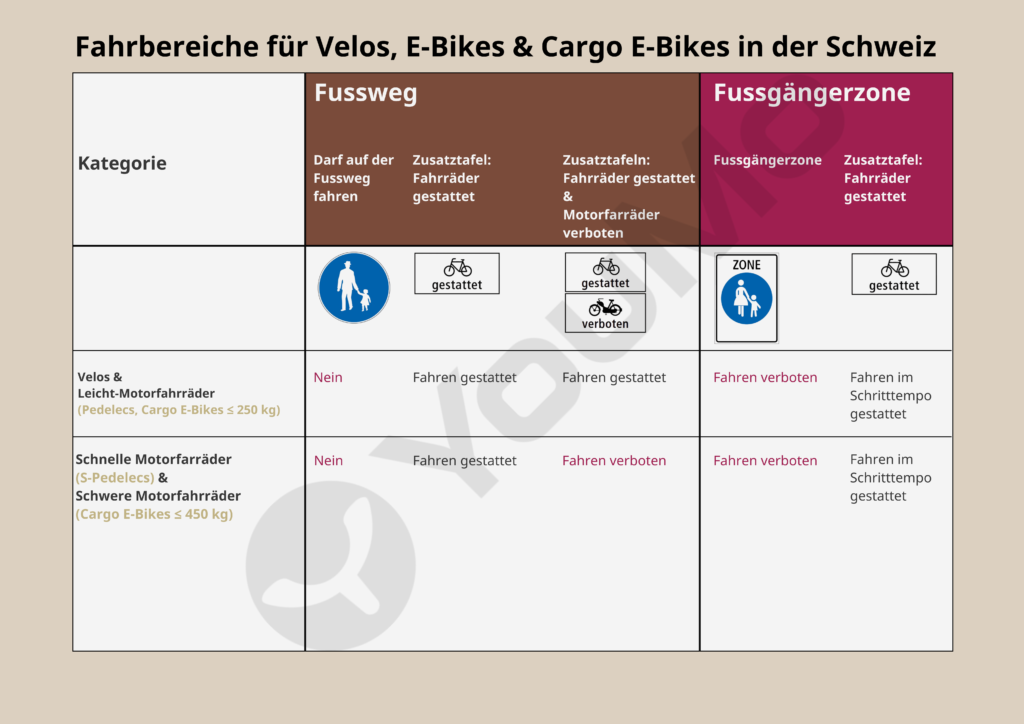E-bike regulations in Switzerland: fully explained - including new rules from July 2025
- Home
- E-bike knowledge
- 2025: The latest rules and…
E-bikes are a popular means of transportation in Switzerland – whether for commuting to work, as an environmentally friendly alternative to the car or for leisure trips.
However, motorized bicycles in particular are subject to a number of regulations that will change once again from 1 July 2025.
In this article, you can find out everything you need to know about current and future e-bike regulations in Switzerland: from legal classification and speed limits to the use of cycle paths, driving license requirements and permissible total weight.
We have summarized all relevant changes and requirements in a detailed, clearly structured guide that leaves no question unanswered – ideal for private individuals, commuters, companies and users of cargo e-bikes.
E-bike, pedelec & S-pedelec: What's the difference?
There are various types of e-bikes in Switzerland, which differ mainly in the type of motor assistance. As many manufacturers refer to their pedelecs as “e-bikes”, confusion often arises. But what is actually what? Here is a clear distinction:
A pedelec (short for “pedal electric cycle”) is a bicycle with an electric drive that only provides assistance when you pedal. The motor assistance is limited to 25 km/h. Nowadays, however, the term “e-bike” has become established, although there are many differences. In contrast to an e-bike, the motor on a pedelec is not independent, but only works with additional pedaling. Legally, they fall into the category of light motorized bicycles.
An S-pedelec (speed pedelec) works according to the same principle, but supports up to 45 km/h. Like pedelecs, S-pedelecs are usually referred to as e-bikes or “fast” e-bikes in everyday use and by manufacturers. Legally, they fall into the category of motorized bicycles.
An e-bike in the classic sense is not a bicycle, as it has an independent motor drive without pedal assistance. Instead of pedal power, the drive is activated by pressing a button or turning a handle. E-bikes are therefore considered motorized two-wheelers rather than bicycles. This category includes mopeds, e-scooters and e-scooters.
Legally, they are divided into two main categories in Switzerland:
- Light motorized bicycles: These include e-scooters and e-scooters, which have limited power and speed.
- Motorcycles: These include mopeds and e-mopeds, which are more powerful and require additional requirements such as compulsory insurance or a driver’s license.
Current categories and regulations for e-bikes in Switzerland
Until June 30, 2025, the Swiss E-Bike Act deals with the following classifications:
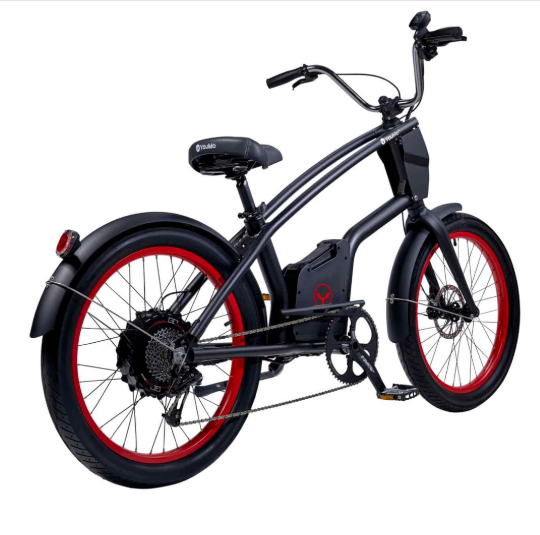
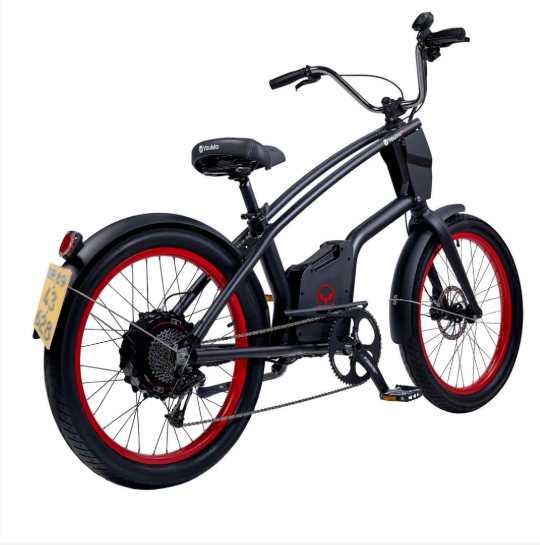
Regulations for e-bikes - light motorcycles (until June 30, 2025)
- Motor power: max. 500 W
- Maximum speed: 25 km/h with pedal assistance (pedelecs)
- Höchstgeschwindigkeit: 20 km/h ohne Tretunterstützung (E-Trottinette, E-Roller)
- Total weight max. 200 kg
- No control plate required
- Driving license: Cat. M from 14-16 years, not necessary from 16 years
- Helmet recommended
Regulations for e-bikes - fast motorcycles (until June 30, 2025)
- Motor power: max. 1000 W
- Maximum speed: 45 km/h with pedal assistance (S-Pedelecs)
- Maximum speed: 30 km/h without pedal assistance (classic mopeds)
- Total weight: max. 200 kg
- Moped license plate required
- Driving license: Cat. M from 14 years
- Helmet obligatory
New categories and rules for e-bikes in Switzerland - from July 1, 2025
From July 1, 2025, new regulations will come into force, including the introduction of a third category for “heavy motorcycles”. The most important changes include the introduction of the new category of heavy motorcycles, which will allow cargo e-bikes with pedal assistance up to 25 km/h to have a total weight of up to 450 kg. In addition, the permissible weight of light motorcycles will be increased from 200 kg to 250 kg.
Another innovation concerns the transportation of children. Previously, a maximum of two children were allowed to travel on Cargo e-bikes. In future, up to four children will be allowed to ride along – provided there are enough protected seats.
The minimum age for e-bikes remains unchanged: Slow e-bikes (up to 25 km/h) and e-scooters may still only be ridden from the age of 14 with a driver’s license (category M) or from the age of 16 without a driver’s license.
Read below to find out when you are allowed to ride a 45 km/h e-bike in Switzerland and whether you need a permit for a 45 km/h e-bike.
Regulations for e-bikes – light motorised bicycles – from July 2025
- Motor power: max. 500 W
- Maximum speed with pedal assistance: up to 25 km/h (pedelecs, cargo e-bikes)
- Maximum speed without pedal assistance (electric motor): up to 25 km/h (E-Trotinette, E-moped)
- Total weight: max. 250 kg
- No driver’s license required (from 16 years)
- No control plate
- Helmet recommended
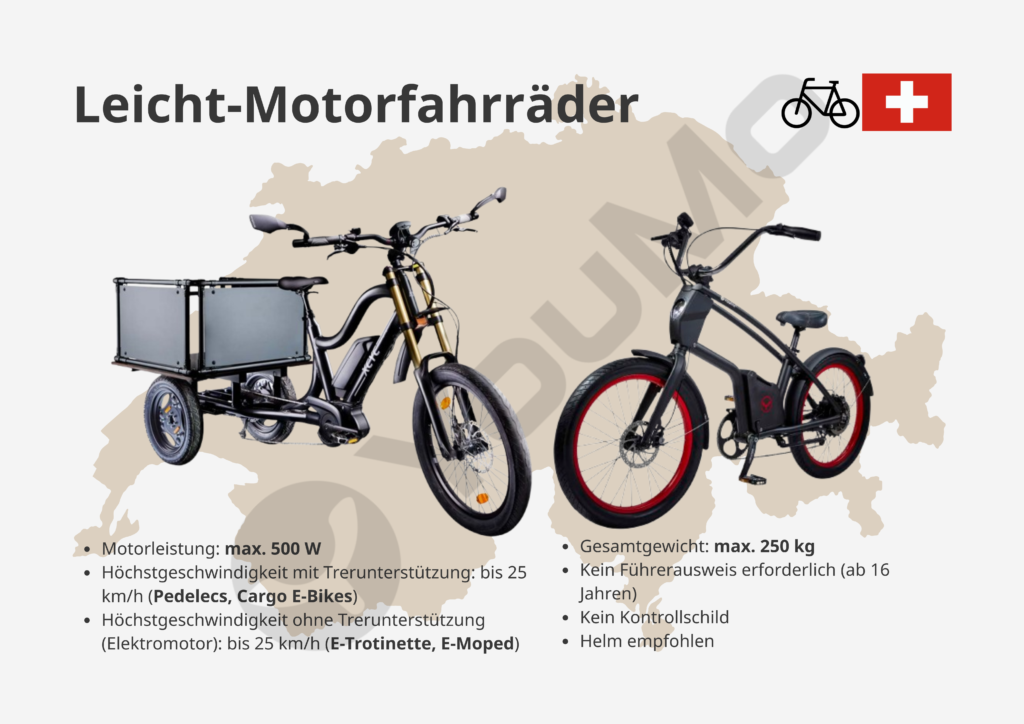
Regulations for e-bikes – fast motorised bikes – from July 2025
- Motor power: max. 1000 W
- Maximum speed with pedal assistance: 45 km/h (S-Pedelecs)
- Maximum speed without pedal assistance: 30 km/h (classic mopeds, e-mopeds)
- Führerschein der Klasse M erforderlich
- Moped license plate required
- Helmet compulsory
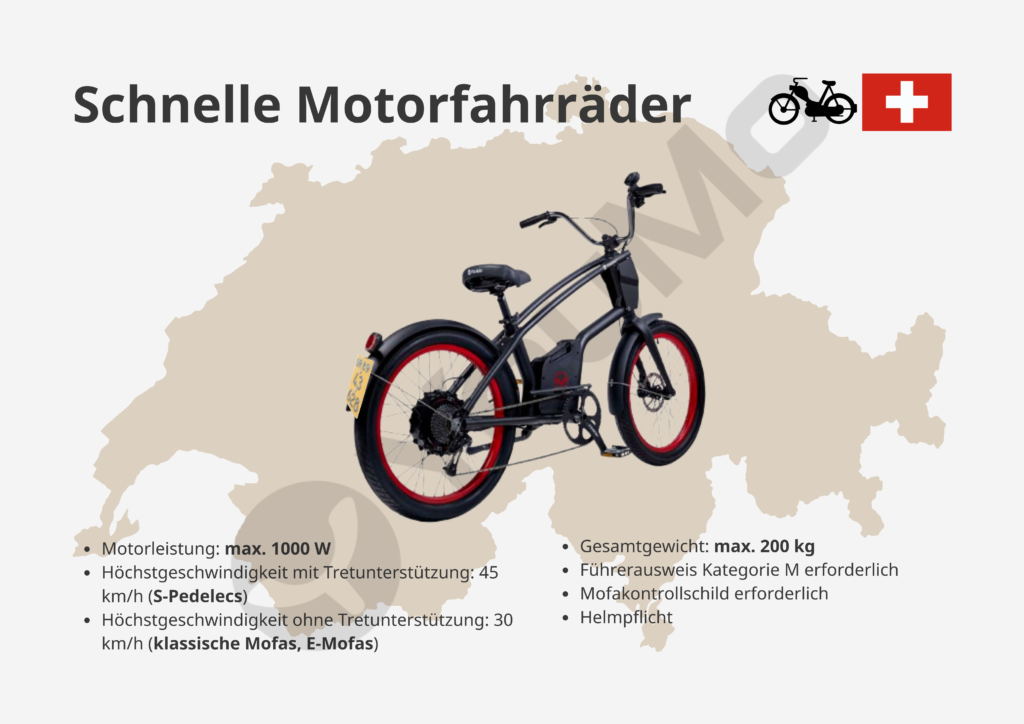
Regulations for heavy motorbikes (cargo e-bikes) – The newly introduced categorisation
- Motor power: max. 2000 W
- Maximum speed with or without pedal assistance: 25 km/h (cargo e-bikes)
- Total weight: 250 – 450 kg
- Führerschein der Klasse M erforderlich
- Moped license plate required
- Helmet compulsory
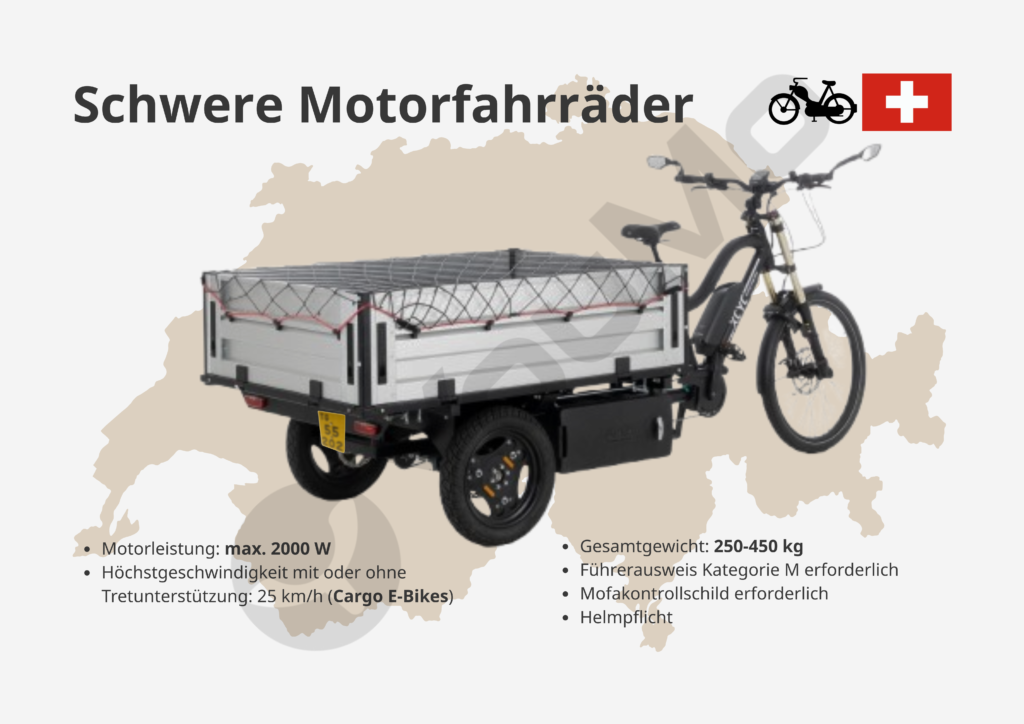
Maximum speed for e-bikes & cargo e-bikes
Maximum speed for e-bikes & cargo e-bikes – until June 30, 2025
Light motorized bicycles, such as pedelecs, cargo e-bikes up to 250 kg or e-scooters, may reach speeds of up to 25 km/h with pedal assistance. If only the electric motor is used without pedaling, a speed limit of 20 km/h applies.
Fast motorized bicycles, such as S-pedelecs or classic mopeds, may reach a speed of up to 45 km/h with pedal assistance. Without pedal assistance – such as with pure mopeds – the maximum speed is 30 km/h.
Maximum speed for e-bikes & cargo e-bikes – from July 1, 2025
Light motorized bicycles, such as pedelecs, cargo e-bikes up to 250 kg, e-scooters or mopeds, may be ridden with pedal assistance up to 25 km/h. If the electric motor is used without pedaling – as is the case with mopeds or e-scooters – the maximum permitted speed is also 20 to 30 km/h, depending on the vehicle type.
Fast motorized bicycles, in particular S-pedelecs or e-mopeds, may reach a speed of up to 45 km/h with pedal assistance. Without pedal assistance – when using only the motor – the speed is limited to 30 km/h.
Heavy motorized bikes, i.e. newly registered cargo e-bikes with a permissible total weight of between 250 and 450 kg, are limited to a maximum speed of 25 km/h – regardless of whether they are pedal-assisted or purely electric.
Cycle paths for e-bikes – Where is an e-bike permitted and where is it not?
Until June 30, 2025
Currently, e-bikes are not only allowed to ride on the cycle path in Switzerland – they actually have to. The Swiss Road Traffic Act stipulates that cycle paths and cycle lanes are not only intended for conventional bicycles, but must also be used by e-bikes.
This applies to:
- Leicht-Motorfahrräder: (bis 25 km/h, ohne gelbes Nummernschild)
- Fast motorcycles: (S-pedelecs) (up to 45 km/h, with yellow license plate)
Bicycles & light motorcycles with a maximum speed of up to 25 km/h may continue to pass even if motorcycles are prohibited. Fast motorcycles with a maximum speed of up to 45 km/h are also permitted to pass, but only if the engine is switched off.
Cycle paths for e-bikes & cargo e-bikes from July 2025
New regulations for the use of cycle paths and roads by e-bikes will come into force from July 2025
Bicycles and light motorcycles (which include pedelecs and cargo e-bikes up to 250 kg) may be ridden on the road if there is no cycle path.
Fast motorcycles (S-pedelecs) and heavy motorcycles (cargo e-bikes weighing between 250 and 450 kg) may only use the road if one of the following signs is present – cycle path, cycle and pedestrian path with separate traffic areas or shared cycle and pedestrian path – and an additional sign with the inscription “optional” is also displayed.
If there is no such signaling, heavy motorcycles are obliged to use the cycle path.
Here is a clear table with the regulations for the use of cycle paths and roads by e-bikes in Switzerland from July 2025:
Control plate & registration requirements for e-bikes & cargo e-bikes
Before July 2025
- Slow e-bikes (25 km/h): No registration or license plate required.
- Fast e-bikes (45 km/h): License plate and compulsory insurance.
From July 2025
- Light motorcycles (25 km/h): No registration or license plate required.
- Fast motorcycles (45 km/h): License plate and compulsory insurance.
- Heavy motorcycles (cargo e-bikes 250-450 kg): License plate and compulsory insurance.
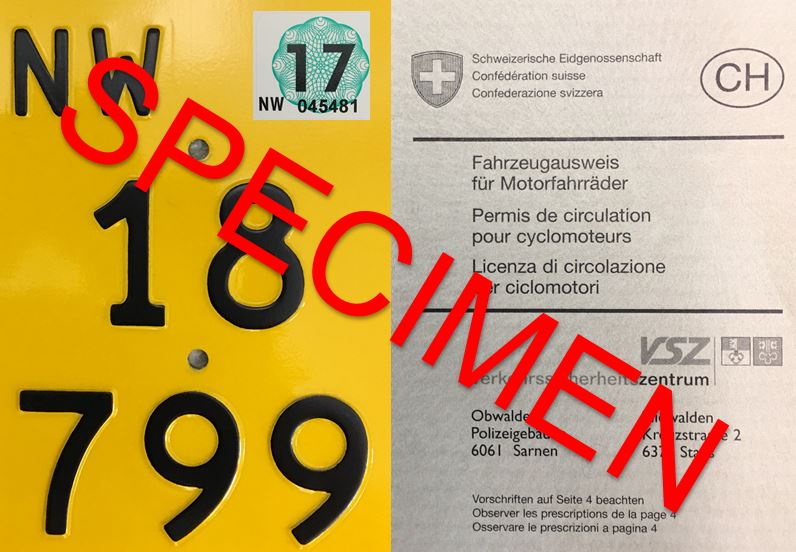
Safe on the road with an e-bike or cargo e-bike: What is mandatory in Switzerland?
Helmets compulsory for e-bikes?
The e-bike helmet requirement has long been in place in Switzerland for fast e-bikes 45 km/h (S-pedelecs) that offer pedal assistance up to 45 km/h. From July 1, 2025, the bicycle helmet requirement will be extended to a new category: Heavy motorized bicycles with a total weight of 250 to 450 kg. These vehicles may only be ridden with a helmet.
What does that mean in concrete terms?
- Slow e-bikes (up to 25 km/h): no helmet requirement, but recommended
- E-bike 45 km/h (S-Pedelec): Helmet compulsory – bicycle helmet required in accordance with the EN 1078 standard
- Heavy motorcycles (cargo e-bikes 250-450 kg): Also required to wear a helmet from July 2025
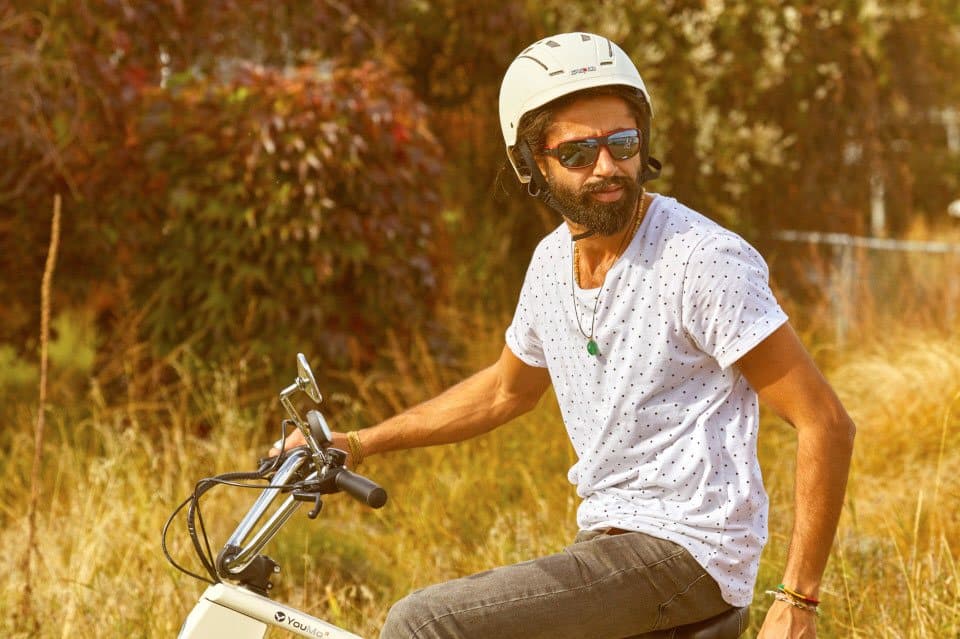
E-bike lights compulsory in Switzerland
The e-bike light obligation in Switzerland has been mandatory by law since April 1, 2022 and applies to all e-bikes. It corresponds to Switzerland’s bicycle light obligation and means that all e-bikes must also be ridden with their lights on during the day.
Before July 2025
Slow e-bikes (25 km/h): a fixed or removable light is mandatory at the front during the day and at the front: white, non-flashing light/rear: red, non-flashing light, fixed or removable at night
Fast e-bikes (45 km/h): a fixed or removable light is mandatory at the front during the day and at the front: white, non-flashing light/rear: red, non-flashing light, fixed or removable at night
From July 2025
Light motorcycles (25 km/h): Mandatory:Daylight obligation
Fast motorcycles (45 km/h): Mandatory: Daylight obligation
Motorcycles must be equipped with at least one white light to the front and one red light to the rear. The lights must not dazzle and must be visible for 100 m at night and in good weather.
Heavy motorcycles (cargo e-bikes 250-450 kg): Mandatory: Daylight requirement
Motorcycles must be equipped with at least one white light to the front and one red light to the rear. The lights must not dazzle and must be visible for 100 m at night and in good weather.
Tip: Check your lights regularly to stay safe on the road and avoid fines.
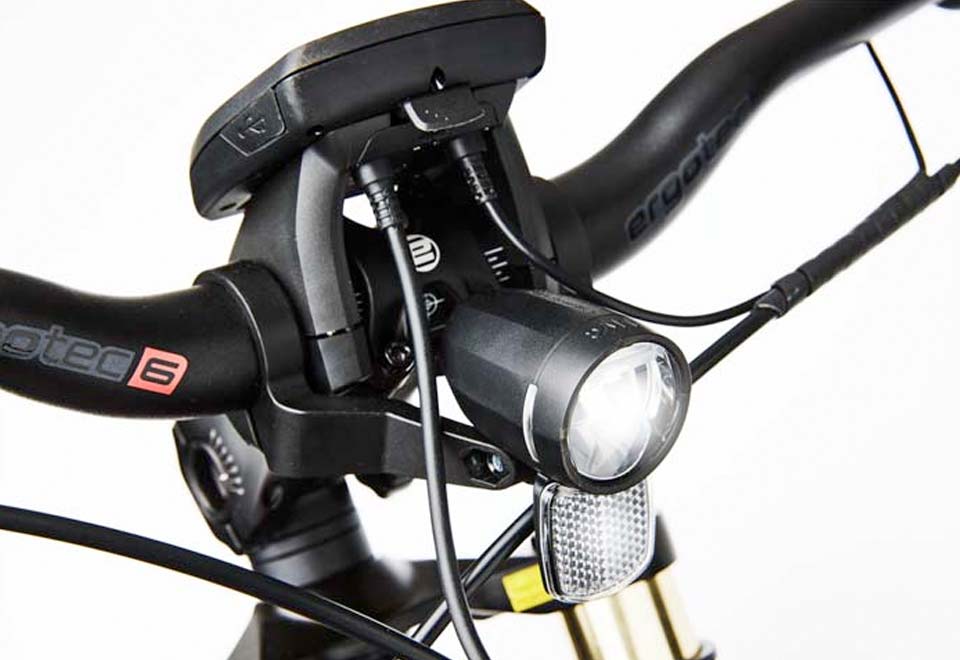
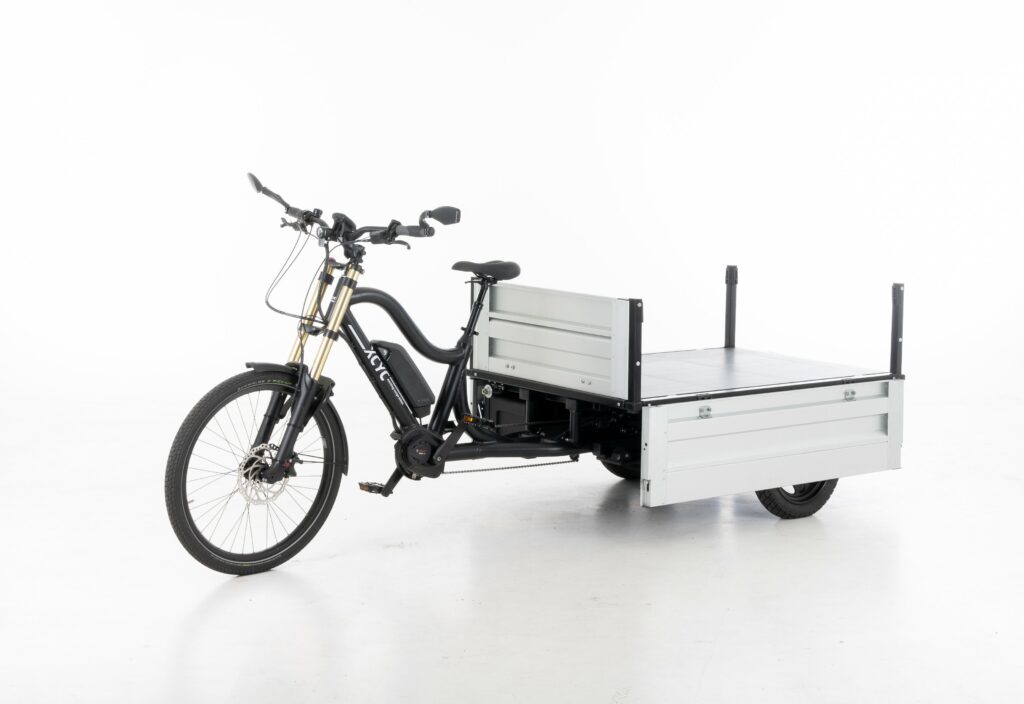
Direction indicators for e-bikes and cargo e-bikes
The regulations do not change here. Direction indicators are permitted for all motorcycles. There are certain requirements for their installation, which vary depending on the distance from the ground of the respective vehicle.
The following applies:
Mounting at the front: The space between the illuminated surfaces must be at least 0.24 m.
Mounting at the rear: The space between the illuminated surfaces must be at least 0.18 m.
Reflectors - mandatory or not?
Reflectors play an important role in the safety of e-bike and pedelec riders. They ensure that you are more visible even in poor lighting conditions or in the dark. In Switzerland, certain passive lighting elements are required by law.
Which reflectors do you need for your e-bike?
Front reflector: A white reflector must be fitted to the front of the e-bike.
Rear reflector: A red reflector must be fitted to the rear of the bike.
Pedal reflectors: Two yellow reflectors must be attached to each pedal – one to the front, one to the rear.
Side reflectors: For better visibility from the side, spoke reflectors or alternatively tires with reflective strips are permitted.
The regulations on passive lighting for e-bikes remain unchanged and apply to all e-bike types – regardless of speed or weight. This is to ensure that e-bike riders are clearly visible in poor lighting conditions or in the dark.
Driver’s license for e-bikes & cargo e-bikes – Which category is required?
Until June 30, 2025
The following applies to slow e-bikes (with pedal assistance up to 25 km/h):
- Young people between the ages of 14 and 16 require a category M driving license.
- No ID is required from the age of 16 – driving is permitted without a driver’s license.
For fast e-bikes (S-pedelecs with pedal assistance up to 45 km/h), a category M driving license is required from the age of 14.
Until then, there is no separate regulation for heavy cargo e-bikes.
From July 2025
From this point onwards, the legislation distinguishes between three vehicle categories:
Light motorized bicycles (up to 25 km/h, up to 250 kg):
- Category M from 14 to 16 years
- No driving license required from the age of 16
Fast motorcycles (up to 45 km/h): Category M required
Heavy motorcycles (cargo e-bikes from 250 to 450 kg): Category M required
This new category will be officially approved for road traffic from July 2025.
Transportation with e-bikes - seats, child seats & trailers
Number of seats and child seats - what to consider
Many parents use e-bikes to transport their children safely and comfortably. Until now, certain rules applied to seats and child seats, depending on the type of e-bike. From July 1, 2025, new regulations for seats and child seats on e-bikes will come into force in Switzerland. These new regulations will allow more flexible use of cargo e-bikes and offer families and companies more options for transporting children and passengers.
Until July 2025: Strict restrictions for passenger transport
Until now, transportation options with e-bikes were severely limited:
- Slow e-bikes (up to 25 km/h, max. 200 kg):
- The transportation of an adult passenger was permitted.
- Alternatively, up to two children were allowed on board, provided protected child seats were installed.
- Fast e-bikes (up to 45 km/h, max. 200 kg):
- No second seat for adults permitted.
- A maximum of one child was allowed to be transported with an approved child seat.
From July 2025: More flexibility for families and commercial users
The new regulation significantly expands the possibilities:
Light motorized bicycles (up to 25 km/h, max. 250 kg):
- Two regular seats are permitted, and two additional protected child seats can be fitted.
- Alternatively, a driver’s seat with four protected child seats is permitted.
- Example: A tandem e-bike can now transport two adults plus two children. Or one person rides alone and takes up to four children with them.
Fast motorized bicycles (up to 45 km/h, max. 200 kg):
- No changes: Still only a single child seat
Heavy motorcycles (cargo e-bikes up to 25 km/h, max. 450 kg):
- This new category enables the transportation of several adults for the first time
- Rule: A free payload of at least 65 kg must be available per seat.
Towing trailers with e-bikes & cargo e-bikes - What is permitted?
Transportation with trailers is a practical way of transporting children or loads on an e-bike. But what rules apply to trailers – and what will change from July 1, 2025?
Until June 30, 2025
Even before the new regulation, there were clear regulations for trailer operation with e-bikes:
- Maximum width: 1 meter
- Maximum operating weight (trailer + transported goods): 80 kg
Depending on the vehicle category, there were different regulations for transporting children:
- Slow e-bikes (up to 25 km/h, max. 200 kg): The transportation of up to two children in a trailer was permitted.
- Slow e-bikes (up to 25 km/h, max. 200 kg): The transportation of up to two children in a trailer was permitted.
From July 2025
With the introduction of new vehicle categories, the previous rules for trailers remain largely unchanged:
- Maximum width of the trailer: still 1 meter
- Maximum operating weight (trailer + transported goods): unchanged at 80 kg
The maximum number of child seats in the trailer remains two, regardless of the e-bike category:
- Light motorcycles (up to 25 km/h, max. 250 kg): ≤ 2 child seats in the trailer
- Fast motorcycles (up to 45 km/h, max. 200 kg): ≤ 2 child seats in the trailer
- Heavy motorcycles (cargo e-bikes up to 25 km/h, max. 450 kg): ≤ 2 child seats in the trailer
New: Trailers may have their own drive that supports up to a maximum of 6 km/h.
Liability insurance - insuring e-bikes & cargo e-bikes correctly
Liability insurance protects e-bike riders from the financial consequences of accidents or damage they cause on the road. Anyone who rides a fast or heavy e-bike should ensure they have valid insurance and the corresponding license plate in good time. From July 1, 2025, the insurance obligation will be extended to a new vehicle category: heavy motorcycles (cargo e-bikes 250-450 kg).
Until June 30, 2025
Slow e-bikes (25 km/h): recommended
Fast e-bikes (45 km/h): mandatory
From July 2025
Light motorcycles (25 km/h): recommended
Fast motorcycles (45 km/h): obligatory
Heavy motorcycles (cargo e-bikes 250-450 kg): mandatory
Parking & parking facilities: Where can I park my e-bike or cargo e-bike?
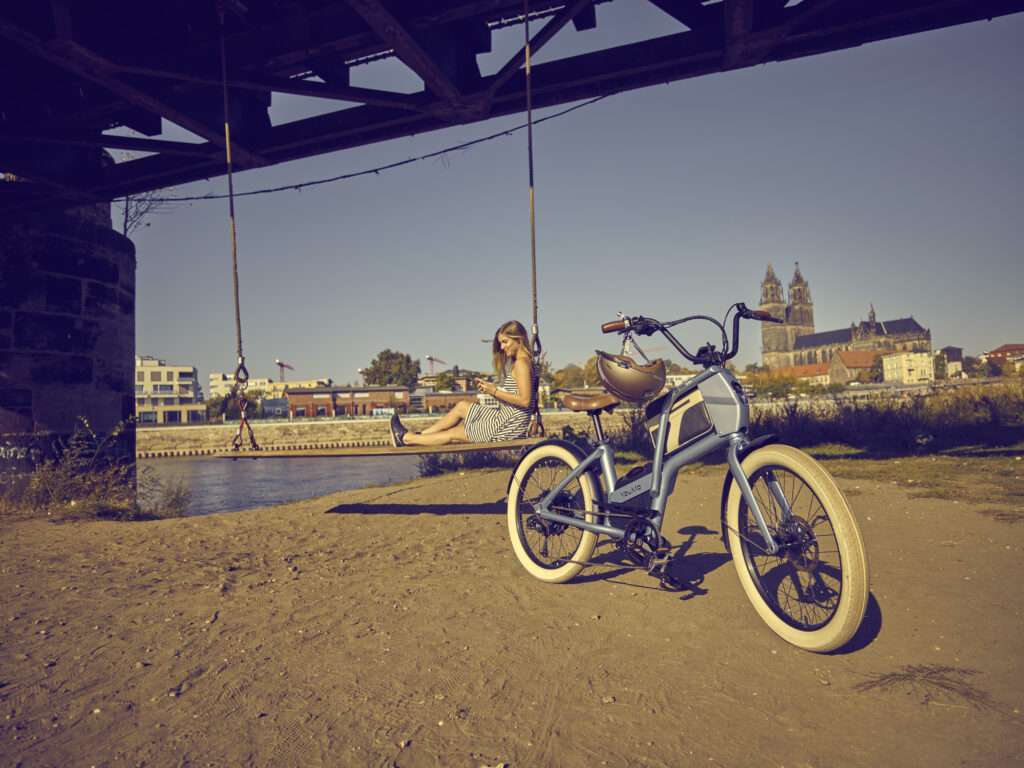
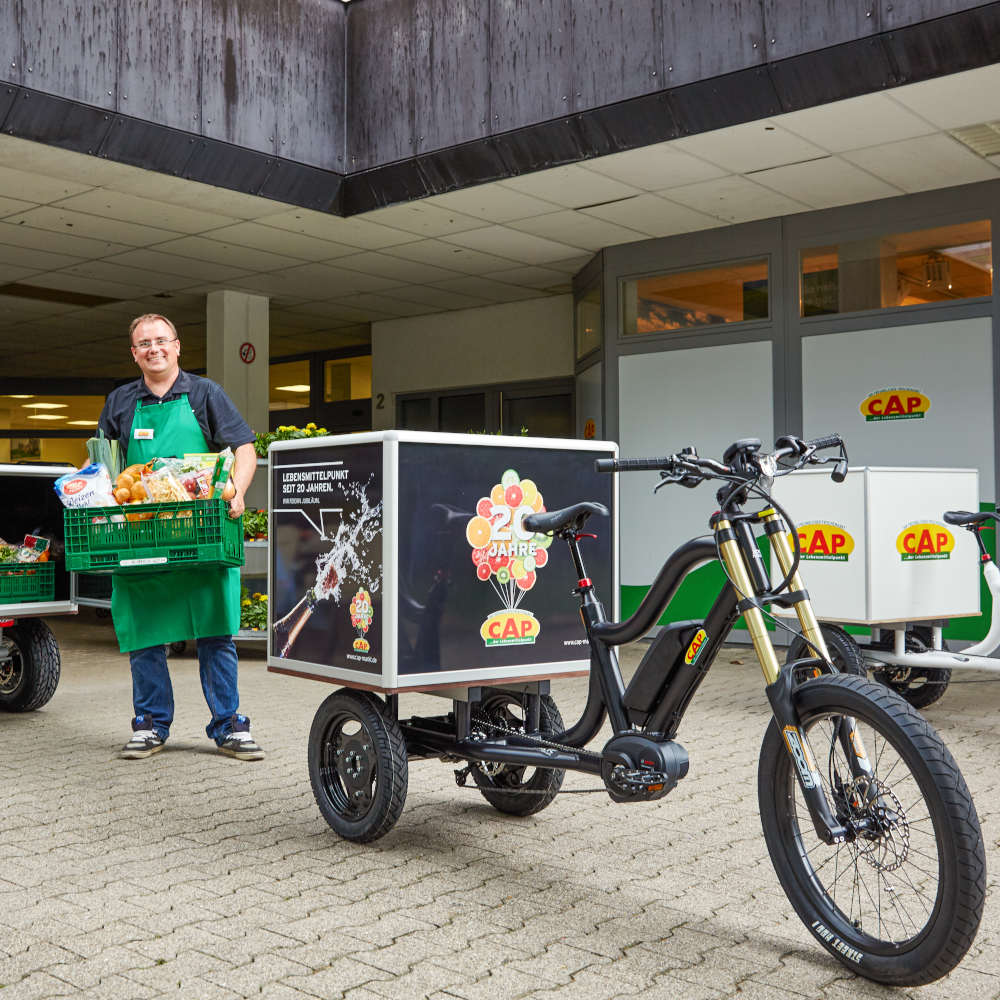
Conclusion: New rules for more safety and flexibility in e-bike traffic
The new regulations for e-bikes and cargo e-bikes, which come into force in Switzerland on July 1, 2025, will bring significant changes.
New vehicle categories, higher weight limits and a relaxed obligation to use cycle paths create more flexibility for the use of cargo bikes in everyday life. Cargo e-bikes in particular benefit from the new regulations, as they can now be used with a total weight of up to 450 kg.
In addition, municipalities can now designate special parking areas for cargo bikes and remove the obligation to use cycle paths for fast e-bikes.
An important point that many people need to be aware of: Until June 2025, fast motorized bicycles (S-pedelecs) were allowed to ride through areas where motorized bicycles were prohibited with the motor switched off – this is now no longer permitted. This means that e-bikes with 45 km/h and cargo e-bikes (250-450 kg) are no longer allowed to simply ride through such zones with the motor switched off, but must adhere to the regular driving bans.
Nevertheless, some aspects remain unchanged, such as the minimum age for riding e-bikes, which is still 14 years with a driving license (category M) or 16 years without a driving license.
Overall, the new regulations ensure greater clarity and safety in the use of e-bikes, particularly in the area of cargo e-bikes. The changes open up new opportunities for sustainable and efficient transportation in cities, while ensuring that the use of electric bikes remains clearly regulated.
